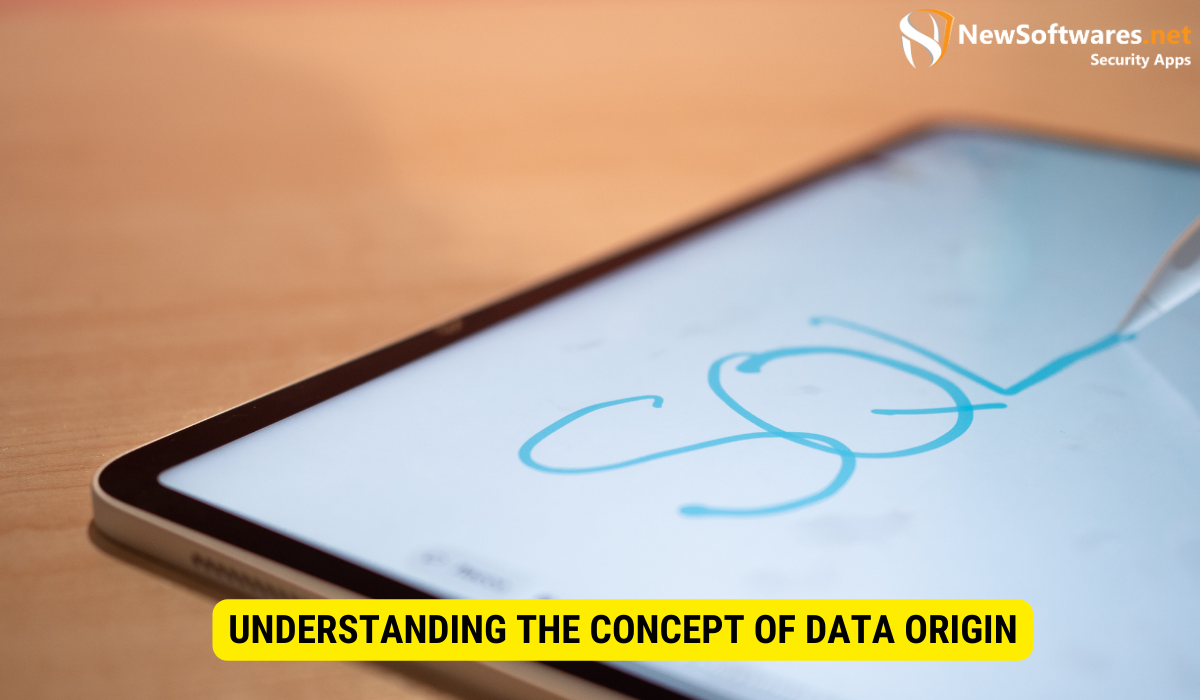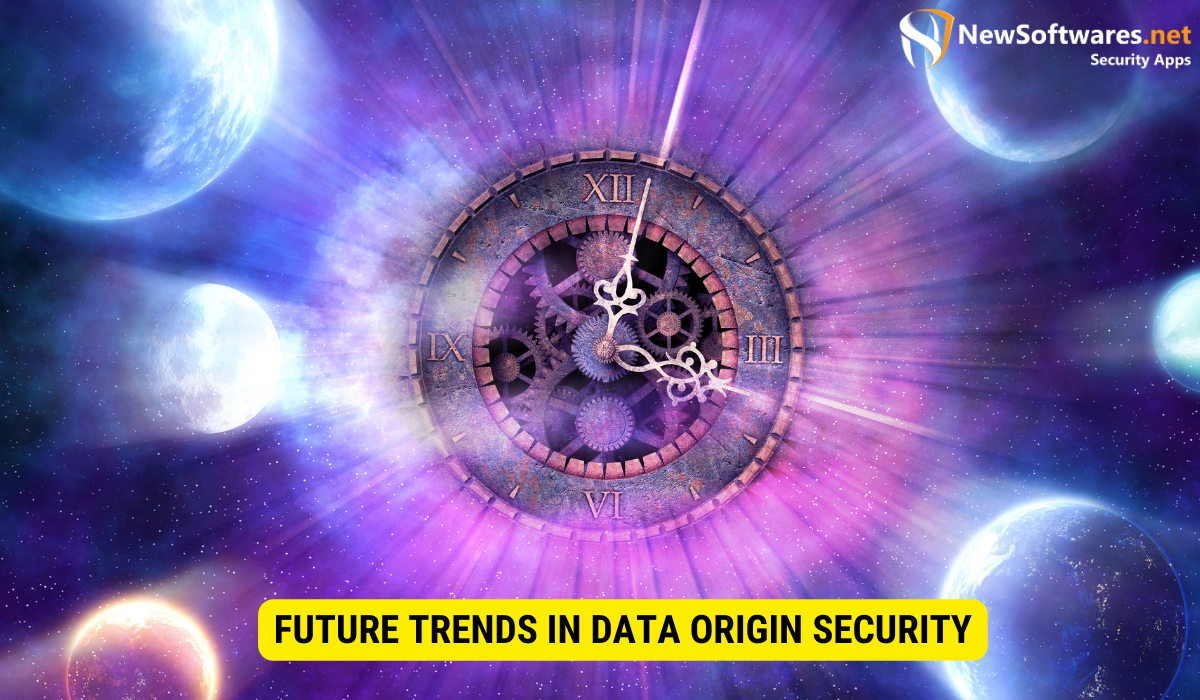Data origin security is crucial for verifying the authenticity of data sources, protecting against unauthorized manipulation, and ensuring trustworthiness. Various techniques, both cryptographic and non-cryptographic, help in verifying data origin. Risks include attacks like data spoofing and identity theft, with consequences ranging from financial losses to reputational damage. Emerging technologies such as blockchain and data provenance hold promise for enhancing data origin security, but challenges like privacy concerns and scalability must be addressed to maintain effective security.
In today’s data-driven world, ensuring the authenticity of data has become a critical element of security. With the increasing prevalence of cyber threats and the potential for data manipulation, it is essential to understand the concept of data origin and how it intersects with security. I will explore the importance of data origin in security, the role of authenticity, techniques for verifying data origin, potential risks and threats, and future trends in data origin security.
Understanding the Concept of Data Origin

At its core, data origin refers to the source or creator of a piece of data. It establishes the trustworthiness and reliability of the information. Data origin can be classified into two categories: internal and external. Internal data origin involves data created within an organization, while external data origin refers to data obtained from external sources.
Internal data origin is generated within an organization’s own systems and processes. This can include data collected from various departments, such as sales, marketing, finance, and human resources. For example, sales data may originate from customer transactions recorded in the organization’s point-of-sale system, while employee data may come from the HR department’s personnel records.
External data origin, on the other hand, involves data obtained from sources outside the organization. This can include data from third-party vendors, government agencies, research institutions, or public databases. For instance, a company may acquire market research data from a specialized research firm to gain insights into consumer behavior and industry trends.
Defining Data Origin
Data origin encompasses various attributes that define its reliability and authenticity. These attributes include the source’s identity, credentials, and the methods used to collect or generate the data. Understanding these attributes is crucial in evaluating the trustworthiness of the data and establishing data origin.
The source’s identity refers to the entity or individual responsible for creating or providing the data. It could be an employee within the organization, a trusted external partner, or an automated system. The credentials of the source, such as their expertise, reputation, and track record, also contribute to the assessment of data origin.
The methods used to collect or generate the data are equally important in determining data origin. For example, data collected through rigorous scientific research methods, such as surveys, experiments, or observations, may be considered more reliable than data generated through less rigorous means.
Importance of Data Origin in Security
Data origin plays a vital role in ensuring the security of information systems. By verifying the source of data, organizations can determine whether to trust and rely on the information for decision-making and critical operations. Authenticity of data origin is essential for detecting and preventing data tampering, unauthorized access, and other malicious activities.
For instance, in the context of cybersecurity, data origin authentication is a crucial component of ensuring the integrity and confidentiality of data. By verifying the origin of data, organizations can prevent unauthorized modifications or alterations to the information, reducing the risk of data breaches or fraudulent activities.
In addition to security, data origin is also important in maintaining compliance with regulatory requirements. Many industries, such as healthcare, finance, and government, have strict regulations regarding data privacy and protection. By establishing the origin of data, organizations can demonstrate compliance with these regulations and avoid potential legal and financial consequences.
Furthermore, understanding data origin can also help organizations in data quality management. By identifying the sources of data, organizations can assess the reliability and accuracy of the information. This knowledge enables them to identify and address any potential issues or biases in the data, ensuring that it is fit for its intended purpose.
The Intersection of Security and Authenticity
Security and authenticity are closely intertwined concepts when it comes to data. Authenticity refers to the trustworthiness and accuracy of data, while security involves protecting data from unauthorized access, manipulation, or disclosure. The integrity and trustworthiness of data heavily rely on ensuring its authenticity.
When we talk about the intersection of security and authenticity, we are essentially discussing the crucial role that authenticity plays in data security. Authenticity serves as a foundation for data security, ensuring that the information has not been altered or tampered with. It provides assurance that the data is reliable and accurate, which is essential for making informed decisions and maintaining the integrity of the data.
The Role of Authenticity in Data Security
Authenticity plays a vital role in data security by protecting against data manipulation and unauthorized modifications. When data is authentic, it means that it has not been tampered with or altered in any way. This protection against unauthorized changes safeguards the integrity of the data, ensuring that it remains trustworthy and accurate.
Imagine a scenario where a financial institution stores customer transaction data. The authenticity of this data is of utmost importance to both the institution and its customers. By ensuring the authenticity of the data, the institution can guarantee that the transactions have not been tampered with, providing peace of mind to both the institution and its customers. This authenticity serves as a strong foundation for the security of the data, as any unauthorized modifications would be immediately detected.
Challenges in Ensuring Authenticity
Ensuring the authenticity of data comes with its own set of challenges. As technology advances, attackers are continually finding new ways to compromise data authenticity. The ever-evolving landscape of cybersecurity poses significant challenges in maintaining data origin security.
Data forgery is one of the primary challenges in ensuring authenticity. Attackers may attempt to forge data by creating fraudulent records or altering existing ones. This can lead to severe consequences, such as false information being used for decision-making or financial fraud. To combat data forgery, organizations must implement robust authentication mechanisms and employ technologies like digital signatures to ensure the integrity and authenticity of the data.
Identity spoofing is another challenge that organizations face when it comes to maintaining data authenticity. Attackers may impersonate legitimate users or entities to gain unauthorized access to data or manipulate it. This can be particularly problematic in systems where user identities play a crucial role in determining access privileges. Robust identity verification processes, multi-factor authentication, and continuous monitoring are essential in mitigating the risks associated with identity spoofing.
Unauthorized data modification is yet another challenge that organizations must address to ensure data authenticity. Attackers may attempt to modify data without proper authorization, leading to inaccurate information being presented or used for decision-making. Implementing access controls, encryption, and audit trails can help organizations detect and prevent unauthorized data modifications, thereby maintaining the authenticity and integrity of the data.
In conclusion, the intersection of security and authenticity is a critical aspect of data management. Authenticity serves as the foundation for data security, ensuring that data remains trustworthy and accurate. However, ensuring authenticity comes with its own set of challenges, such as data forgery, identity spoofing, and unauthorized data modification. Organizations must continuously adapt and implement robust security measures to maintain the authenticity of their data and protect it from potential threats.
Techniques for Verifying Data Origin
To verify the authenticity of data origin, various techniques can be employed. These techniques can be broadly categorized into cryptographic and non-cryptographic methods.
Cryptographic Methods for Data Authentication
Cryptographic methods rely on mathematical algorithms and encryption techniques to verify the integrity and authenticity of data. Techniques such as digital signatures, hash functions, and public-key infrastructure (PKI) are commonly used to ensure data origin security.
Non-Cryptographic Methods for Data Authentication
Non-cryptographic methods focus on verifying data origin without the use of encryption techniques. These methods include methods such as watermarking, timestamping, and secure log management. These techniques help establish data authenticity and prevent unauthorized modifications.
Potential Risks and Threats to Data Origin
Despite the efforts made to ensure data origin security, various risks and threats exist that can compromise data authenticity.
Common Attacks on Data Origin
Attackers employ several techniques to compromise data origin. These attacks include man-in-the-middle attacks, data spoofing, and identity theft. These attacks pose a severe risk to data integrity and can have significant consequences.
Consequences of Compromised Data Authenticity
Compromised data authenticity can have severe consequences, both financially and reputationally. Incorrect data can lead to wrong decisions, financial losses, legal implications, and damage to an organization’s credibility. Maintaining data origin security is crucial to avoiding these detrimental consequences.
Future Trends in Data Origin Security

As technology continues to evolve, so does the need for robust data origin security. Several emerging technologies aim to enhance data authenticity and protect against threats.
Emerging Technologies for Data Origin Verification
New technologies like blockchain, data provenance, and machine learning-based anomaly detection are emerging as promising solutions for verifying data origin. These technologies provide enhanced security measures to ensure the authenticity and integrity of data.
Predicted Challenges in Data Origin Security
While emerging technologies offer promising advancements, challenges remain in data origin security. Issues such as privacy concerns, scalability, and the speed of data verification pose hurdles that must be overcome to maintain effective data origin security.
Key Takeaways
- Understanding the concept of data origin is crucial in evaluating the trustworthiness and reliability of information.
- Data origin plays a vital role in ensuring the security of information systems by establishing trust and authenticity.
- Verifying the authenticity of data origin can be achieved through cryptographic and non-cryptographic techniques.
- Compromised data authenticity can lead to severe consequences, including financial losses and damage to an organization’s reputation.
- Emerging technologies such as blockchain and data provenance show promising advancements in data origin security.
FAQs
Why is data origin important in security?
Data origin is important in security because it establishes the trustworthiness and reliability of information. By verifying the source of data, organizations can make informed decisions and protect against unauthorized access or manipulation.
What are cryptographic methods for data authentication?
Cryptographic methods utilize mathematical algorithms and encryption techniques to verify the integrity and authenticity of data. Techniques such as digital signatures and hash functions are commonly used cryptographic methods for data authentication.
What are the consequences of compromised data authenticity?
Compromised data authenticity can result in financial losses, incorrect decision-making, legal implications, and damage to an organization’s reputation. It is essential to maintain data origin security to avoid these detrimental consequences.
What are emerging technologies for data origin verification?
Emerging technologies such as blockchain, data provenance, and machine learning-based anomaly detection are being utilized for data origin verification. These technologies enhance data authenticity and provide robust security measures.
What challenges exist in data origin security?
Challenges in data origin security include privacy concerns, scalability, and the speed of data verification. Overcoming these challenges is crucial to maintaining effective data origin security.
Conclusion
Ensuring the authenticity of data origin is vital in today’s data-driven world. Data origin acts as a foundation for data security, protecting against unauthorized manipulation and maintaining the integrity of information. By employing adequate techniques and understanding the potential risks and emerging technologies, organizations can enhance data origin security. The future of data origin security relies on continuous innovation and vigilance in adapting to new threats and challenges.
